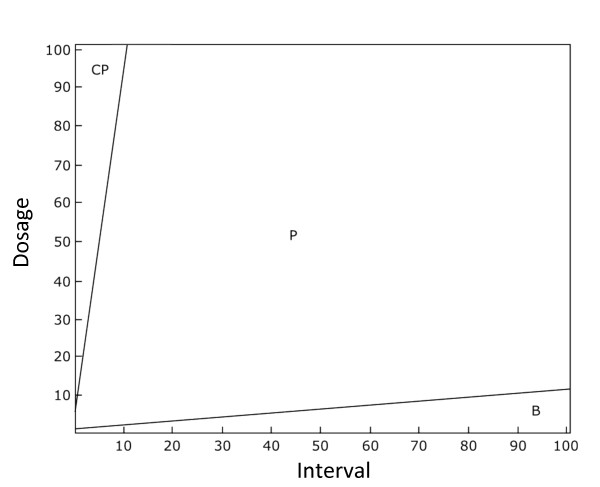Figure 6.
The effect of antibiotic dosage intensity and the interval between treatments on the cell types persisting at equilibrium for the full model (consisting of wild-type cells, cells with resistance on the chromosome, plasmids carrying resistance and plasmids with no resistance) without segregation (i.e. s = 0). Here, plasmid-carried resistance is favoured over non-resistant plasmids at higher dosages, but shorter treatment intervals, but are favoured over chromosomal resistance at lower dosages but longer treatment intervals. This figure shows the case where all cells are susceptible to the antibiotic but where "C" cells suffer a mortality of m = 0.002, "P" cells suffer a mortality of m = 0.001 and "CP" cells have a combined mortality of 0.000002 (the product of the two mortalities). Wilt-type cells suffer a mortality m = 0.1. "F" denotes wild-type cells, "P" denotes cells infected with a plasmid carrying resistance and "C" denotes cells with resistance on the chromosome and "B" denotes cells carrying plasmids that do not code for resistance genes. Cell types that are present in the population at a density greater than exceeding 0.001 are shown. The plots were calculated by running the simulation for a number of parameter values for 5,000 time-steps. Lines were then smoothed by interpolation. Parameters used are r = 1, a = 1, β = 0.1, cc = 0.02, cp = 0.02, x = 0.05 and l = 0.5.

